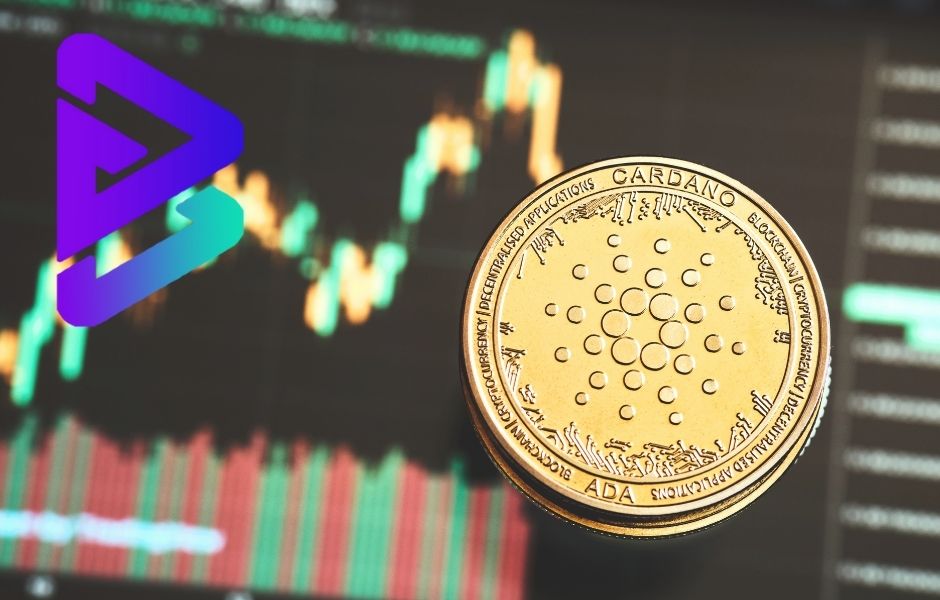The DeFi Market Lacks Decentralization: Why Is This Happening In 2024?
Decentralized finance (DeFi) was introduced as a revolutionary concept, promising to disrupt traditional finance by creating a peer-to-peer financial ecosystem without intermediaries such as banks, brokers, or other centralized institutions. The core idea behind DeFi market is to leverage blockchain technology to build open, transparent, and decentralized financial services accessible to anyone with an internet connection.
However, as the DeFi market has evolved, a paradox has emerged: despite its foundations being built on decentralization, many DeFi platforms and protocols are exhibiting characteristics of centralization. This is in direct contrast to the initial promise of creating an entirely decentralized financial system. In this article, we will explore the reasons behind this trend, the challenges DeFi platforms face in achieving true decentralization, and the implications this has for the future of the DeFi market.
Understanding DeFi and Its Decentralization Ideal
Before diving into why decentralization is lacking in DeFi market, it’s essential to understand what DeFi is and how it is supposed to work.
What is DeFi?
DeFi refers to a set of financial services and products built on blockchain networks, primarily Ethereum, that aim to replicate traditional financial instruments such as lending, borrowing, trading, insurance, and asset management—without the need for a central authority. The idea is to provide financial services through smart contracts, which are self-executing contracts with the terms of the agreement directly written into code. These smart contracts are transparent, immutable, and decentralized.
Key components of the DeFi ecosystem include:
- Decentralized Exchanges (DEXs) like Uniswap and SushiSwap.
- Lending Platforms such as Aave and Compound.
- Stablecoins like DAI and USDC.
- Liquidity Pools that facilitate yield farming and staking.
- Decentralized Autonomous Organizations (DAOs) that manage governance.
Decentralization in DeFi market is crucial because it removes the need for trusted intermediaries. Users can interact directly with protocols, smart contracts, and other users without needing to trust any third party. This leads to greater financial inclusion, transparency, and security.
The Promise of Decentralization in the DeFi market
When DeFi protocols were first launched, the vision was clear: to create a financial ecosystem where users could maintain full control over their assets without relying on centralized financial institutions. This idea was particularly appealing because traditional finance has been heavily centralized for centuries, with banks and institutions controlling access to credit, capital markets, and payment systems.
The principles of decentralization in DeFi market are supposed to manifest in several ways:
- Governance: In a decentralized system, governance is distributed, typically through tokens, so that no single entity has control over decisions. This ensures that protocols evolve in a way that reflects the interests of the community.
- Protocol Ownership: DeFi platforms aim to be community-driven, where the code is open-source, and anyone can participate in building or improving the ecosystem.
- Transparency: DeFi operates on blockchain, and transactions are public, making it easy to audit and verify processes. This transparency is a core component of decentralization.
Despite these lofty goals, the DeFi market is struggling to achieve true decentralization. Let’s look at the key reasons why.
Also, read – What Are Flash Loans In The DeFi market And Its Top 4 Shocking Examples
Centralization Trends in the DeFi Market
1. Concentration of Token Ownership and Governance Power
One of the most significant challenges to decentralization in DeFi is the concentration of token ownership. Many DeFi projects issue governance tokens, which are meant to give token holders the power to vote on protocol upgrades, changes to interest rates, and other crucial decisions. However, a large percentage of these tokens are often held by a small group of investors, early project backers, and venture capital firms.
For example, in some cases, it has been found that less than 10% of token holders control the majority of governance votes. This results in a centralization of decision-making power, undermining the democratic principles of DeFi market.
This concentration is especially apparent in projects that raise funds through initial coin offerings (ICOs) or private token sales. Venture capital firms and institutional investors can accumulate large amounts of governance tokens during these rounds, allowing them to exert significant control over protocol decisions.
Impact on Decentralization: When governance is controlled by a small group of people or entities, the protocol may not evolve in the best interest of the broader community. It also leads to concerns about centralization, as the protocol’s direction is influenced by a few individuals with deep pockets, not by the wider decentralized community.
2. Centralized Infrastructure Providers
Although DeFi market aims to be decentralized, the infrastructure that supports many DeFi projects often relies on centralized entities. These include centralized oracles, which provide external data to smart contracts (such as price feeds), centralized liquidity providers, and centralized development teams that push updates and protocol changes.
For instance, many DeFi protocols rely on oracles like Chainlink, which, while decentralized in theory, still faces criticisms regarding its reliance on centralized nodes. A small number of centralized data providers can introduce the risk of manipulation, downtime, or other failures that could compromise the integrity of the entire system.
Additionally, centralized exchanges (CEXs) still play a significant role in the DeFi ecosystem, acting as on-ramps for users to convert fiat into cryptocurrency. Though decentralized exchanges (DEXs) have gained traction, many users continue to rely on centralized exchanges, leading to concerns about the centralization of liquidity and trading.
Impact on Decentralization: The reliance on centralized infrastructure providers compromises the core ethos of DeFi market, making it less resilient and more susceptible to manipulation or disruption. In a truly decentralized system, these services would be powered by the community rather than external, centralized entities.
3. The Role of Founders and Development Teams
Another critical issue in DeFi’s lack of decentralization lies in the role of the founders and the development teams behind many projects. Often, the creators of DeFi projects maintain significant control over their platforms, including the ability to implement changes or upgrades to the code.
Some projects, especially early in their lifecycle, have been criticized for allowing the central development team to have veto power over protocol governance or code changes. Although some DeFi protocols are governed by DAOs (Decentralized Autonomous Organizations), in many cases, the development teams retain substantial influence, especially when a project is in its early stages.
For example, the governance of Compound (a leading DeFi protocol) was initially controlled by the Compound Labs team, which had a significant say in how the protocol would evolve. While governance eventually became more decentralized, the initial influence of the core team still shaped the protocol’s early trajectory.
Impact on Decentralization: This centralization of power in the hands of founders and development teams prevents DeFi platforms from achieving true autonomy. If a centralized team controls major aspects of a protocol, such as decision-making and updates, it goes against the ideals of community-driven governance that DeFi market aims to achieve.
4. The Rise of Centralized Stablecoins
Stablecoins, which are pegged to the value of fiat currencies like the US dollar, are a crucial component of DeFi. However, many of the most widely used stablecoins, such as Tether (USDT) and USD Coin (USDC), are issued by centralized entities. These stablecoins provide liquidity to DeFi platforms, but their centralized nature undermines the idea of decentralization.
For example, USDT is issued by Tether Ltd., a company that controls the minting and redemption of USDT tokens. Although the Tether blockchain is decentralized, the control of the supply and backing of USDT remains with a centralized company. Similarly, USDC is issued by Circle, which also retains control over the issuance and redemption of the stablecoin.
While decentralized stablecoins like DAI aim to provide a more decentralized alternative, they still rely on centralized systems for governance and collateral management.
Impact on Decentralization: Centralized stablecoins create a point of failure within the DeFi ecosystem. Their reliance on centralized entities to maintain their peg and ensure liquidity means that the DeFi market, which aims for decentralization, is still tethered to traditional financial institutions and structures.
5. Regulatory Pressure
The growing regulatory scrutiny of the DeFi sector has also contributed to the centralization of some DeFi platforms. In response to regulatory pressure, several DeFi projects have implemented KYC (Know Your Customer) and AML (Anti-Money Laundering) procedures, which are inherently centralized.
For example, some DeFi platforms now require users to submit personal identification before they can interact with the protocol or withdraw funds. This defeats the purpose of providing pseudonymous, borderless financial services that are foundational to DeFi.
Impact on Decentralization: Regulatory compliance often requires centralizing control over certain aspects of the platform, such as user verification. This can reduce the degree of decentralization and increase the risk of censorship.
The Path Forward: Can DeFi Achieve True Decentralization?
Despite the challenges, DeFi market still has the potential to achieve true decentralization, but it will require concerted effort from developers, investors, and the broader community. Here are a few steps that could help make DeFi more decentralized:
- Community Governance: Empowering smaller token holders and increasing the diversity of participants in governance can help achieve a more decentralized decision-making process.
- Decentralized Infrastructure: Building decentralized oracles, data providers, and infrastructure layers will reduce reliance on centralized entities.
- Founder Transparency: Developers and founders should commit to decentralizing control of their protocols as quickly as possible and be transparent about their goals and roadmap.
- Regulatory Collaboration: While adhering to regulations is necessary, DeFi projects can work to minimize centralization by exploring alternative ways to comply with rules without sacrificing decentralization.
Conclusion: The Challenges Ahead for DeFi
While DeFi market has transformed the financial landscape, it is clear that it is still far from achieving the fully decentralized vision that many had hoped for. Centralization continues to plague the DeFi market in various forms, from concentrated token ownership to reliance on centralized infrastructure providers.
However, the ongoing evolution of the DeFi ecosystem offers hope. As the market matures, it is likely that solutions will emerge to address these issues. For DeFi to truly live up to its potential, a concerted effort must be made to create more decentralized governance structures, build resilient and decentralized infrastructure, and ensure that the interests of a diverse community are represented.
Ultimately, the success of DeFi market in achieving its goal of decentralization will depend on how well the industry adapts to these challenges. If it can overcome these hurdles, DeFi will not only revolutionize the financial sector but also redefine the very concept of decentralization in the digital age.
Stay informed with daily updates from Blockchain Magazine on Google News. Click here to follow us and mark as favorite: [Blockchain Magazine on Google News].
Get Blockchain Insights In Inbox
Stay ahead of the curve with expert analysis and market updates.
latest from tech
Disclaimer: Any post shared by a third-party agency are sponsored and Blockchain Magazine has no views on any such posts. The views and opinions expressed in this post are those of the clients and do not necessarily reflect the official policy or position of Blockchain Magazine. The information provided in this post is for informational purposes only and should not be considered as financial, investment, or professional advice. Blockchain Magazine does not endorse or promote any specific products, services, or companies mentioned in this posts. Readers are encouraged to conduct their own research and consult with a qualified professional before making any financial decisions. The featured image used is just a creative depiction of the title and it does not intend to hurt sentiments of any person or institution. If it hurts anyone sentiments, please do not hesitate to reach out to Blockchain Magazine.

 Bitcoin
Bitcoin  Ethereum
Ethereum  XRP
XRP  Tether
Tether  Solana
Solana  USDC
USDC  Dogecoin
Dogecoin  Cardano
Cardano  Lido Staked Ether
Lido Staked Ether  TRON
TRON  Wrapped Bitcoin
Wrapped Bitcoin  Wrapped stETH
Wrapped stETH  Chainlink
Chainlink  Avalanche
Avalanche  Sui
Sui  Stellar
Stellar  Litecoin
Litecoin  Toncoin
Toncoin  Shiba Inu
Shiba Inu  Hedera
Hedera  LEO Token
LEO Token  MANTRA
MANTRA  USDS
USDS  Hyperliquid
Hyperliquid  WETH
WETH  Polkadot
Polkadot  Bitcoin Cash
Bitcoin Cash  Bitget Token
Bitget Token  Ethena USDe
Ethena USDe  Wrapped eETH
Wrapped eETH  Uniswap
Uniswap  Monero
Monero  NEAR Protocol
NEAR Protocol  Pepe
Pepe  WhiteBIT Coin
WhiteBIT Coin  Aave
Aave  Bittensor
Bittensor  Ondo
Ondo  Aptos
Aptos  Internet Computer
Internet Computer  Dai
Dai  Official Trump
Official Trump  Ethereum Classic
Ethereum Classic  Mantle
Mantle  Tokenize Xchange
Tokenize Xchange  OKB
OKB  Gate
Gate  sUSDS
sUSDS  Coinbase Wrapped BTC
Coinbase Wrapped BTC 




